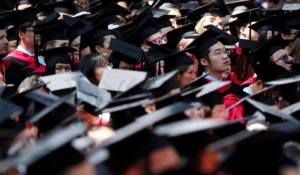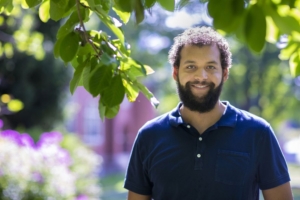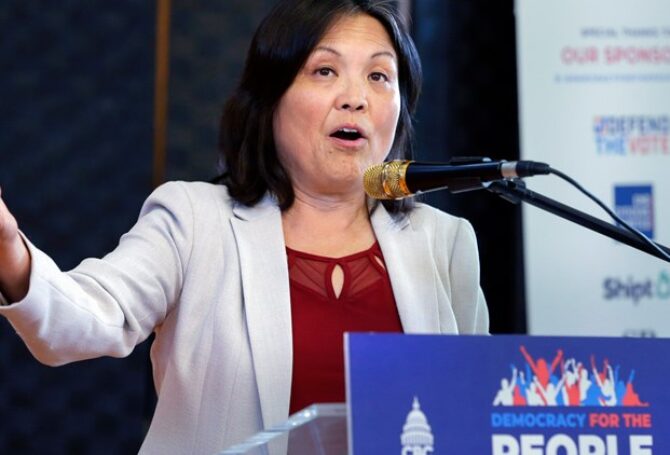
Boost Student Aid and Support Colleges That Attract Minority Students
Whether you are pleased or dismayed by the U.S. Supreme Court ruling on affirmative action, there are other, more salient steps to achieve equity and create opportunity for new generations of American students.
 The focus on diversity at elite universities shouldn’t obscure the broader societal need to provide accessible avenues for students to pursue higher education in any form that meets their life objectives. That means directing attention to all post-secondary education, including community colleges and trade schools as well as four-year institutions and graduate schools.
The focus on diversity at elite universities shouldn’t obscure the broader societal need to provide accessible avenues for students to pursue higher education in any form that meets their life objectives. That means directing attention to all post-secondary education, including community colleges and trade schools as well as four-year institutions and graduate schools.
Richard Arum and Mitchell Stevens, sociology professors at California public and private universities, argue, “The key to greater racial equity in American higher education is elevating the quality of the broad range of schools that most students attend”.
In a New York Times op-ed, Arum and Stevens point to the Higher Education Act of 1965, part of President Lyndon Johnson’s War on Poverty, that created grants and loans to make college more attainable for millions of Americans. States joined the effort with need-based and color-blind student aid, such as Opportunity Grants for Oregon postsecondary students.
“The country needs to attend to the unfinished business of making college education a truly inclusive mechanism of social mobility,” according to Arum and Stevens. They could have added that America desperately needs more scientists, teachers, nurses, technologists, manufacturing workers and tradespeople to sustain our economy and remain competitive globally.
An obstacle Arum and Stevens identify is the tendency to favor flagship universities at the expense of “public schools serving historically marginalized groups”. They also urge “colleges to improve how undergraduate education is provided and measured…to ensure students at less selective schools have access to programs that are well-designed, adequately funded and demonstrably effective at promoting learning, graduation and meaningful employment”.
Arum and Stevens see a role for well-endowed private universities to share some of their wealth by offering “affordable, credit-bearing academic classes” to students from other institutions as a practical alternative to affirmative action admission policies. They say this would give a wider array of students an opportunity to list course work from an elite university on their resume. It also would be a mutually beneficial workaround to achieve greater diversity.
They say the private sector can play a more active role in collaborating with community and four-year colleges on curricula that focuses on specific skills rather than a diploma. Students who master skills and gain good-paying jobs become prime candidates to pursue undergraduate and graduate degrees based on their success.
Engaging in debate over the Supreme Court’s affirmative action ruling can obscure a more basic need – providing academic avenues for a greater number of minority and low-income students. “Even with affirmative action in place, most students of color did not go to elite colleges, and the ruling does nothing to change that,” Arum and Stevens wrote. “In fact, a majority of Black and Hispanic students attend universities that accept more than three-quarters of their applications. The current opportunity to bring racial equity to American higher education lies in the collective recommitment to the quality and success of more accessible institutions.”
“The country needs to attend to the unfinished business of making college education a truly inclusive mechanism of social mobility.”
Beyond Affirmative Action
In another Times op-ed, Tyler Austin Harper, an assistant professor of environmental studies at Bates College, describes his earlier-life experience of prepping high school students for college admissions. He claims the incentives of elite colleges with affirmative action protocols “encourage and reward racial gamification”.
 “Chinese and Korean kids wanted to know how to make their application materials seem less Chinese or Korean,” Harper recalled. “The rich white kids wanted to know how to seem less rich and less white. The Black kids wanted to make sure they came across as Black enough. Ditto for the Latino and Middle Eastern kids. For these kids, getting into an elite college had been reduced to performance art.”
“Chinese and Korean kids wanted to know how to make their application materials seem less Chinese or Korean,” Harper recalled. “The rich white kids wanted to know how to seem less rich and less white. The Black kids wanted to make sure they came across as Black enough. Ditto for the Latino and Middle Eastern kids. For these kids, getting into an elite college had been reduced to performance art.”
“It was a game I was soon compelled to play myself as a Black Ph.D. candidate in search of a job as a professor,” Harper wrote. “I agonized over how – and whether – to talk about my race in ways that would mark me as a possible diversity hire. It felt like cheating to check the box and like self-sabotage not to.”
Despite his concerns over how affirmative action played out in admissions, Harper says he disagrees with outlawing it. “Even though elite institutions haven’t always lived up to the spirit of affirmative action – giving a leg up to those who need it most – the present system has managed to secure some racial diversity in higher education, including for working-class minority applicants (I was one of those students).”
Without affirmative action, Harper predicts “our unhealthy system of racial gamification will intensify without any of the benefits of racial justice and real structural redress that affirmative action afforded”. He encourages elite college presidents to look past the ruling and “collectively reimagine the admissions process without fear of penalty”.
He encourages students of all backgrounds to recognize attending an elite college isn’t “the only path to happiness and success or racial equality”.
College Racial Diversity at Home
Here is data from Oregon college websites about the diversity of their undergraduates:
The University of Oregon Admissions office says 36 percent of its freshman class identify as racial or ethnic minorities – 14 percent Asian American, 6 percent Black or African American, 3 percent Native American and 2 percent Native Hawaiian or Pacific Islander.
Oregon State University reports 60 percent of its undergraduate students are white and 28 percent racial or ethnic minorities. Of its 18,084 undergraduates, 3,566 identify as Hispanic, 2,846 as international students, 2,414 as Asian American, 2,174 as multi-ethnic and 512 as Black or African American.
Portland State University says its 17,237 undergraduates identify as 50 percent white, 39 percent BIPOC, 18 percent Hispanic, 9 percent Asian, 6 percent multi-ethnic, 4.3 percent Black or African American and 1.3 percent Native American. PSU notes 47.4 percent of its undergraduates are first-generation students, 61 percent receive student aid and 25 percent are parents with children.
 Portland Community College says racial and ethnic minorities make up 37 percent of its 8,886 undergraduate student enrollment – 16 percent Hispanic, 8 percent multi-ethnic, 7 percent Asian American and 5 percent Black and African American.
Portland Community College says racial and ethnic minorities make up 37 percent of its 8,886 undergraduate student enrollment – 16 percent Hispanic, 8 percent multi-ethnic, 7 percent Asian American and 5 percent Black and African American.
Clark College, located in Vancouver, reports its student population is 66 percent white, 12.5 percent Hispanic, 6.25 percent multi-ethnic, 5.62 percent Asian American, 1.8 percent Black or African American and around 1 percent Native American, Native Hawaiian and Pacific Islander.
Willamette University, a private postsecondary institution located in Salem, reports 62 percent of its student body identify as white, 12 percent Hispanic, 10 percent multi-ethnic, 9 percent Asian American and 2 percent Black or African American.
Linfield University, a private postsecondary institution with its main campus in McMinnville and a campus in Portland, indicates 64.3 percent of its undergraduates are white, 17 percent Hispanic, 7 percent multi-ethnic, 5.8 percent Asian American, 1.6 percent Black or African American and 0.4 percent Native American.



